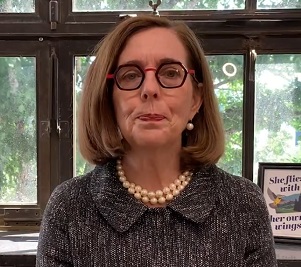This kind of cronyism and inside-tracking is of great concern to many in the public
Oregon Governor Kate Brown recently did two astonishing things: she broke the promise she made to the public ensuring transparency in the judicial appointment process, while simultaneously making her
100th judicial selection. The press release she issued memorializing both achievements also praised herself for the diversity of her appointments, which is expanded upon below.
First and foremost, Brown’s
broken vow of transparency is too important to be overlooked. The promise came in September 2019, in the wake of her shocking appointment of her
general counsel Misha Isaak to the Court of Appeals, without giving notice of the vacancy to any others who would seek to apply.
That was entirely outside of the usual process that the office typically followed to fill a
court vacancy. Brown’s decision to install the apparently underqualified Isaak into such an important position smacked of cronyism and
ruffled feathers in the legal community.
When the dust settled after the fiasco, Brown pledged to announce all judicial vacancies and “standardize†the appointment process.
But now she has broken even that vague promise: Brown’s 100th judicial selection, Jacqueline Alarcón, was made without any announcement of a vacancy needing to be filled—in this case, the retirement of Judge Jerry Hodson from Multnomah County District Court, effective June 30th.
Governor Brown’s office and the Oregon Judicial Department have failed to produce a copy of that retirement letter, so it is not known when it was submitted.

Whatever day it was tendered, Brown then made a conscious decision to keep the vacancy secret, and rather than call for a fresh pool of applicants, Brown instead chose from the
dusty pile of sixteen résumés leftover from the last Multnomah court opening. That begs the question: is this the best that Multnomah can do?
The answer is, no, it is
not the best that Oregon’s busiest court can do. Which brings us to those diversity statistics.
On their face, the 100 judges that Brown selected over her two terms -- 75% white, 25% persons of color, and 50/50 female/male -- line up fairly well with the races, ethnicities, and genders of
Oregon’s actual population -- meaning that the state’s judiciary more or less accurately and proportionally reflects the actual public it serves. Such visibility and representation are vital to the judicial branch.
However, that 25% representation for POC came mostly in the last six months, after a dismal four year stretch -- as though Brown suddenly realized that her commitment to diversity on the bench was evidently an empty promise, and she needed to hastily make up the difference.
Perhaps more telling than that mad, eleventh hour dash is another statistic not promoted in her press release: Nearly half of Brown’s judicial appointments belong to -- or used to belong to -- Oregon Women Lawyers, an organization of which Governor Brown was a
founding member, and of which incoming Judge Jacqueline Alarcón was the most recent
president, her term ending just last month.
According to its website, OWLS as they are known, has around 1,200 members, and while their mission is clearly stated, they are exceptionally light on details about their activities or how they achieve their goals—beyond getting themselves appointed to the bench.
A D V E R T I S E M E N T

A D V E R T I S E M E N T
More importantly, there are more than 15,000 licensed attorneys in Oregon, all of whom are eligible for judicial appointment, and OWLS comprise only 8% of them. Meaning that OWLS, no matter how good or noble the work they purportedly do, are vastly overrepresented in Oregon’s judiciary.
It is therefore reasonable to conclude that being an OWL is the single most important factor in Brown’s selection process. And that’s cronyism.
Given that OWLS are such a significant network of attorneys and judges, and given that OWLS are supported by some of Portland’s toniest law firms, it is also reasonable to conclude that some people who end up in court may have greater “access to justice†through the OWLS’ grid than others.
This kind of cronyism and inside-tracking is of great concern to many in the public, no matter what their affiliation.
--Stephanie Volin| Post Date: 2022-05-26 11:43:25 | Last Update: 2022-05-26 11:45:19 |







 Whatever day it was tendered, Brown then made a conscious decision to keep the vacancy secret, and rather than call for a fresh pool of applicants, Brown instead chose from the dusty pile of sixteen résumés leftover from the last Multnomah court opening. That begs the question: is this the best that Multnomah can do?
Whatever day it was tendered, Brown then made a conscious decision to keep the vacancy secret, and rather than call for a fresh pool of applicants, Brown instead chose from the dusty pile of sixteen résumés leftover from the last Multnomah court opening. That begs the question: is this the best that Multnomah can do?
